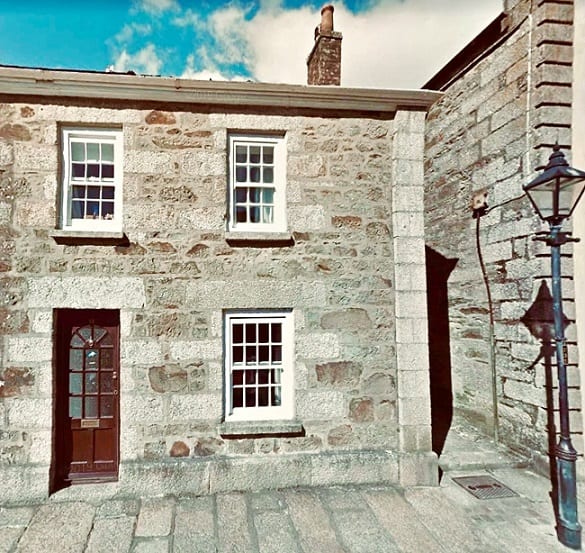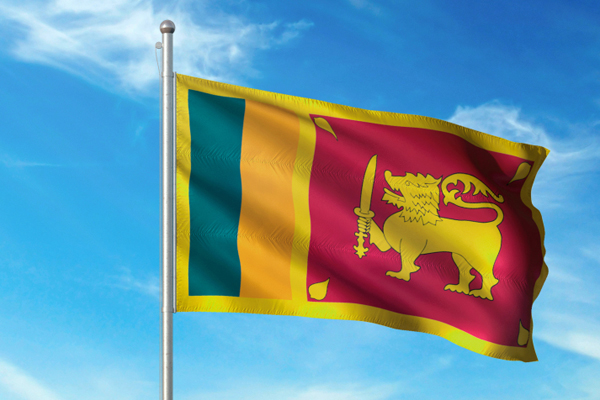Snorkelling between tectonic plates at Silfra in Iceland's Thingvellir National Park
Iceland lies along the mid-Atlantic Ridge and exists because of the divergence of two tectonic plates - the North American plate and the Eurasian plate - and a great place to see this first hand is at Silfra. The...
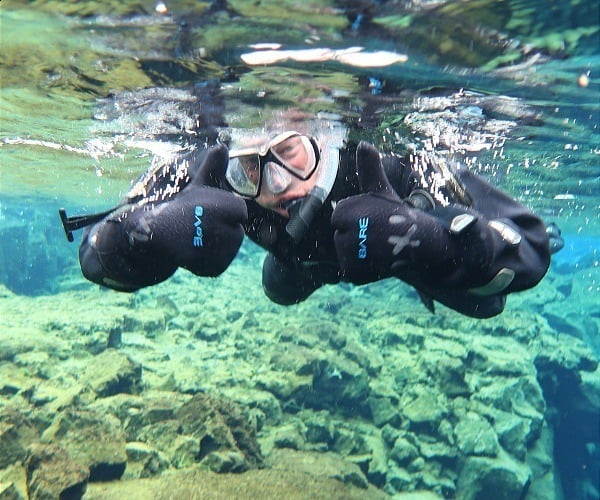
By Paul Johnson on Oct 01, 2022 in Adventure Travel, Attractions, Europe, Family Travel, Going Out, Iceland, Leisure Travel, Regions, Speciality Travel, Western Europe
Remember those geography lessons at school where you learnt about continental drift and the movement of the earth’s crust? Iceland lies along the mid-Atlantic Ridge and exists because of the divergence of two tectonic plates – the North American plate and the Eurasian plate – and a great place to see this first hand is at Silfra in the Þingvellir National Park. What’s more, this is the only place in the world where you can snorkel between two continents.
Silfra and the Þingvellir valley, situated within Iceland’s Golden Circle, were formed by the divergent tectonic drift of the the two plates which drift about 2 cm farther apart every year. This builds tension between the plates and the earth mass above which is relieved through periodic major earthquakes that occur at approximately ten year intervals. These earthquakes create cracks and fissures and Silfra, which lies at the rim of the Þingvallavatn Lake, is one of the largest and deepest of these fissures.
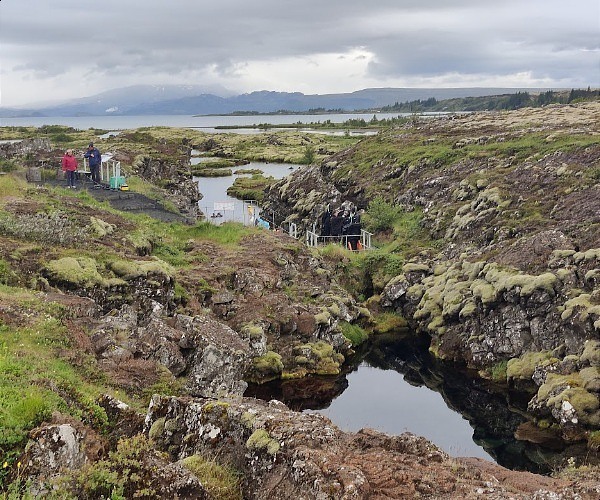
This fissure is fed by meltwater from Iceland’s second largest glacier, Langjökull, which seeps underground into porous basalta lava rock before percolating through an aquifer over a period of 30-100 years. This highly filtered groundwater fills fissures such as the one at Silfra, making it exceptionally clear and of huge appeal snorkelers and scuba divers, particularly given the unique location between two tectonic plates.
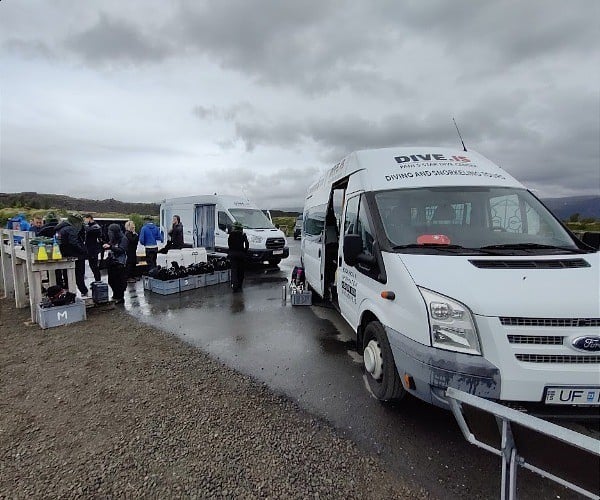
There are a number of companies that offer snorkeling and diving experiences. We went with DIVE.IS who are one of the experts for this particular activity and the longest running dive and snorkel company in Iceland. The process was quite straight forward – we just turned up at the Silfra meeting point, had our booking and disclaimers checked in the back of a van (it is mandatory for every DIVE.IS participant to fill out a medical form), and we were good to go. With certain medical conditions such as heart disease, epilepsy or lung disease, it is unfortunately not possible to take part. With certain other medical conditions such as asthma, high blood pressure, vertigo or cancer, you can only participate if you get medical clearance from a doctor.
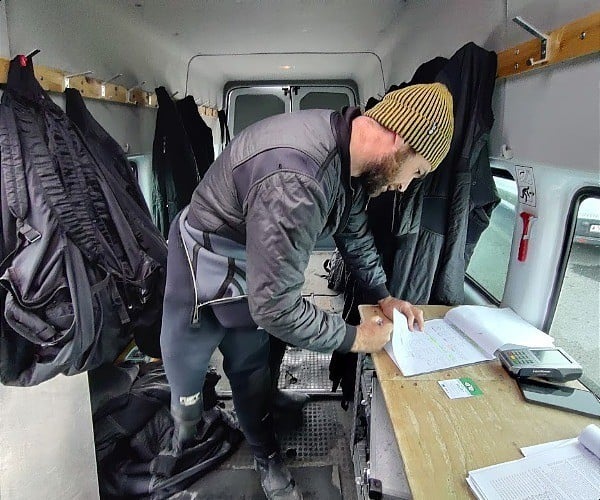
We were then assigned a guide who would accompany us on the snorkeling tour – in our case, a gentleman named Pau from Spain – before being directed to another van to get into a drysuit. Why all the vans you might wonder? It’s because Silfa is a UNESCO World Heritage Area and new building constructions are not allowed in the area.
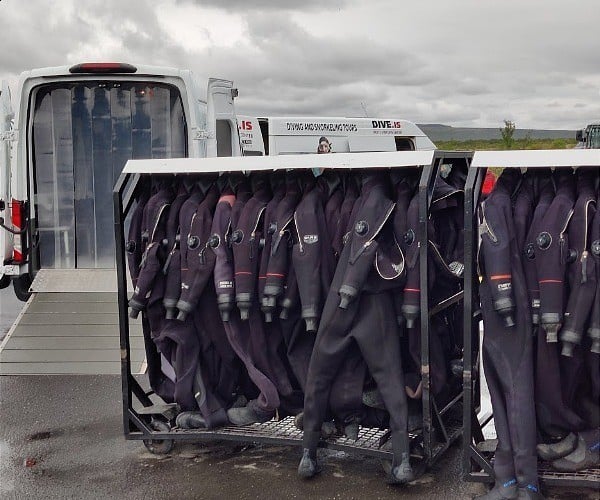
In addition to a drysuit each, we were of course kitted out with flippers, and a snorkel and mask, too. The flies can be a bit of a nuisance so you might also want to borrow one of their mosquito and midge head nets if you find them bothersome.
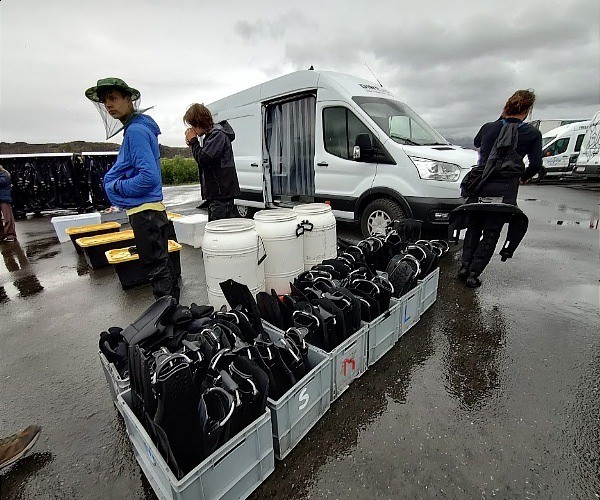
The suit has seals on the neck and wrists that stop water from getting in. These can be tight and sometimes an additional rubber strap needs to be worn around the neck. This can be quite uncomfortable – if you feel it is too tight, ask your guide to check it for you.
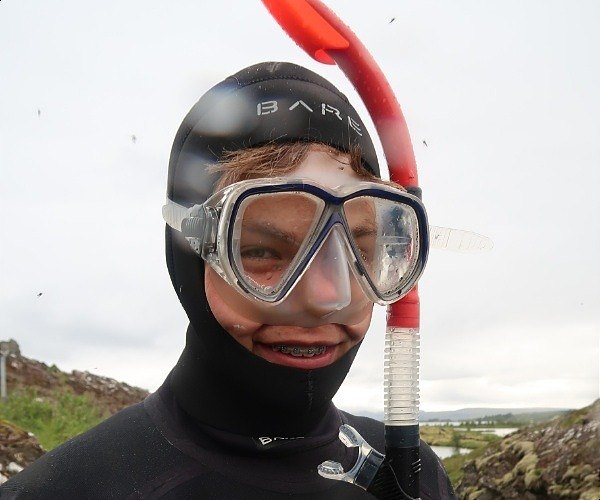
We were also provided with neoprene hoods and semi-dry neoprene gloves. Our heads and hands were exposed to the water through these but that was perfectly OK. A small part of our faces were not covered by the hood and these were the only parts of us that were in direct contact with the water.
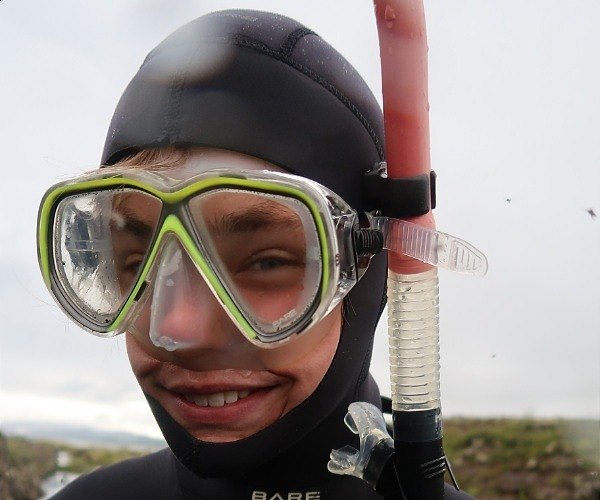
Snorkelers are released in small batches, typically around six people plus a guide, so there’s a short queue as people wait to enter the water but it served as an opportunity to have a family photo taken, even if it’s a struggle to identify who is who!
Although some operators offer this experience in a wetsuit, DIVE.IS only provide dry suits for the activity. The only advantage I can think of for wearing a wetsuit would be that you’d be able to dive down beneath the surface a little which you can’t easily do in a dry suit. Given that you are in the water for 30-40 minutes and the water temperature is 2° Celsius, a dry suit is probably a better option. Whatever you choose, it’s recommended that participants have eaten breakfast or lunch before the activity because of the length of time spent in the cold water.
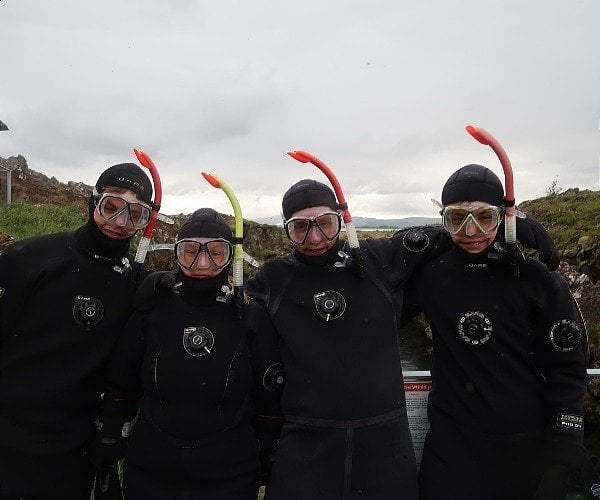
Once your time comes to enter the water, your guide will talk you through the process. There is a metal staircase that leads directly into the water (you can see it in the distance in the photograph) – we just walked down those and, before we knew it, we were face-down in the water. The first thing that struck me wasn’t the cold – it really wasn’t that bad – but just how clear the water was. The water is extremely pure and astonishly clear, and it’s estimated that the underwater visibility is more than 100 metres… quite incredible!
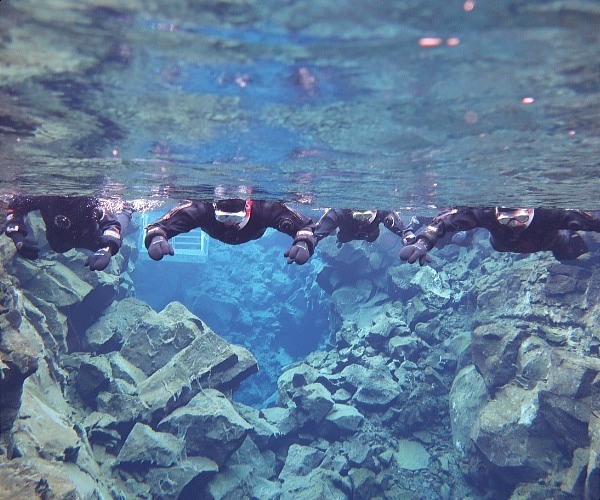
If you have read other articles about Silfra, you may have seen people describe being able to outstretch their arms and touch both tectonic plates at the same time when they dived. This is rather misleading to say the least – or they have exceptionally long arms – as the tectonic plates are 5 kilometres apart! Remember, this is a fissure that’s formed because of an earthquake due to the diverging plates.
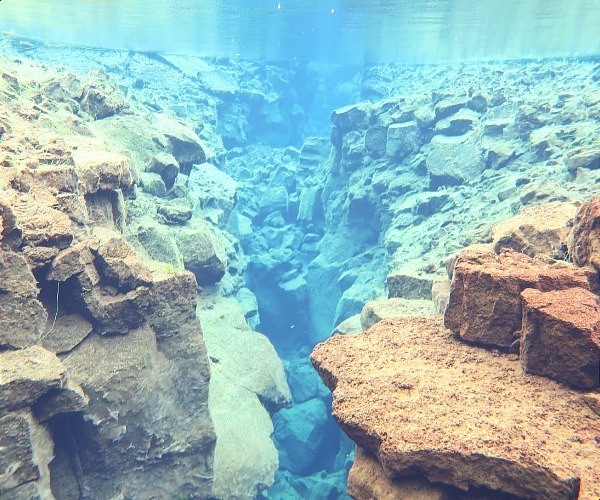
As we drifted in the water, mesmerised by the underwater spectacle around us, Pau swam amongst our group taking photographs of us on a GoPro. If you want to make your Silfra experience a lasting memory, you can purchase these as part of your tour with DIVE.IS and they will send you a Dropbox link after the snorkeling tour so that you can download the pictures to your device.
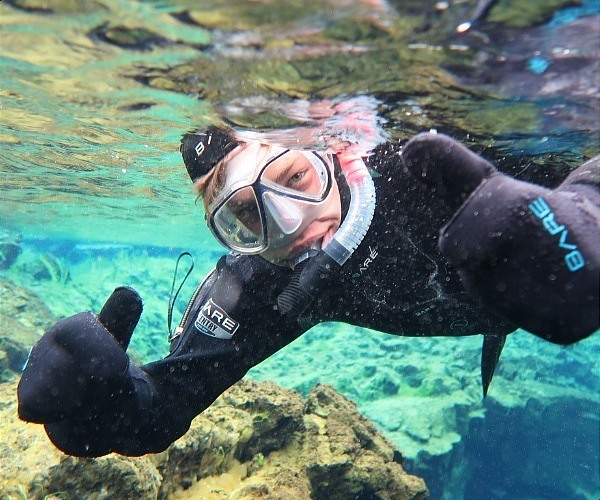
Meanwhile, we continued to marvel at the perfectly-filtered crystal clear water which is possibly the clearest and most pristine water on the planet. Because the water is so clear, the light plays upon the surface like glittering diamonds – on sunny days, the rays go to great depths, even creating rainbows on the rocks because the clear water refracts light in the same way that crystals do.
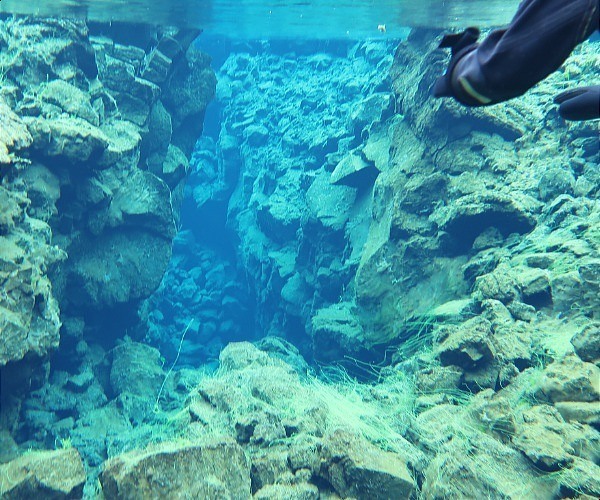
This is a once-in-a-lifetime experience that is sure to be a highlight of your time in Iceland!

You’ll rarely see fish in Silfra but you will see a number of different types of algae, including bright, neon green ‘troll hair’ algae that gives the rocks a magnificent spalsh of colour.
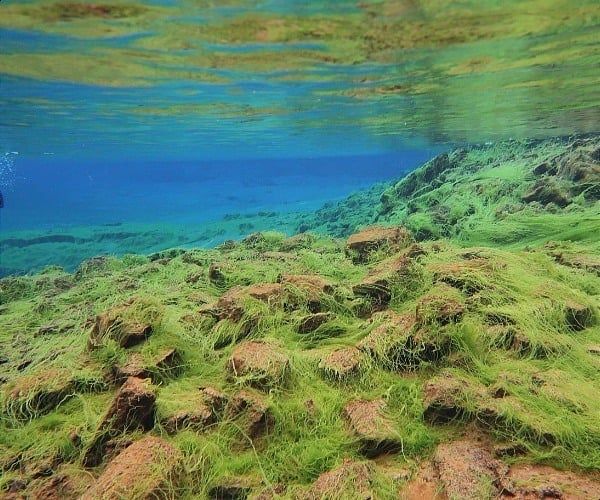
IMPORTANT NOTICE:
If you are reading this article anywhere other than on A Luxury Travel Blog, then the chances are that this content has been stolen without permission.
Please make a note of the web address above and contact A Luxury Travel Blog to advise them of this issue.
Thank you for your help in combatting content theft.
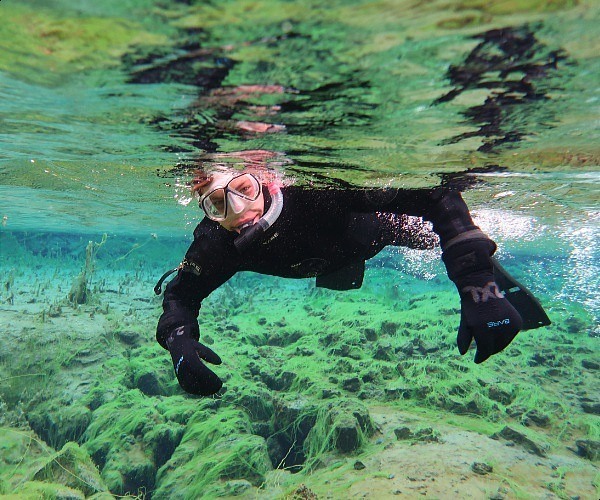
In places, Silfra is actually surpisingly deep – up to 63 metres deep – although very few divers go to anything like these depths.
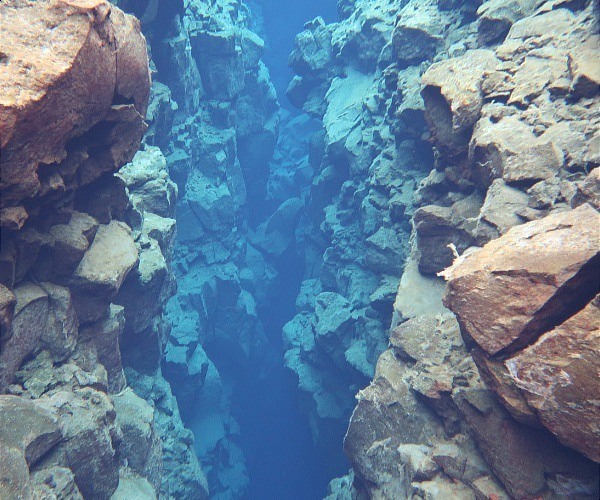
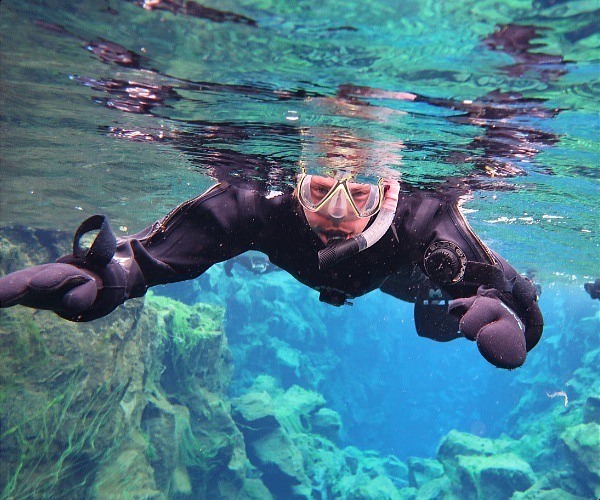
There is a slight current in Silfra and participants must be comfortable swimming against it during the last part of the tour, but it is really not that strong so manageable even for novice swimmers.
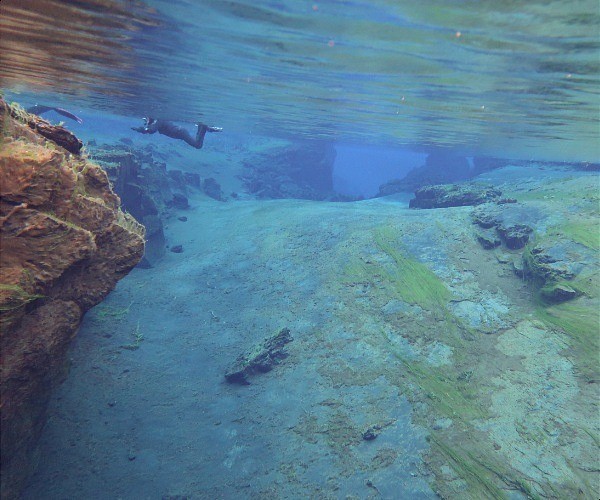
Once we finally got on dry land, we were supplied with hot chocolate which was a very welcome pick-me-up after our time in the cold water.
Planning a trip to Iceland yourself? You can watch a video from our trip to Iceland here. You can see footage from Silfra between 1m 26s and 1m 49s:
Disclosure: This post is sponsored by DIVE.IS. Our trip to Iceland was also sponsored by Helly Hansen.

 Tfoso
Tfoso 










